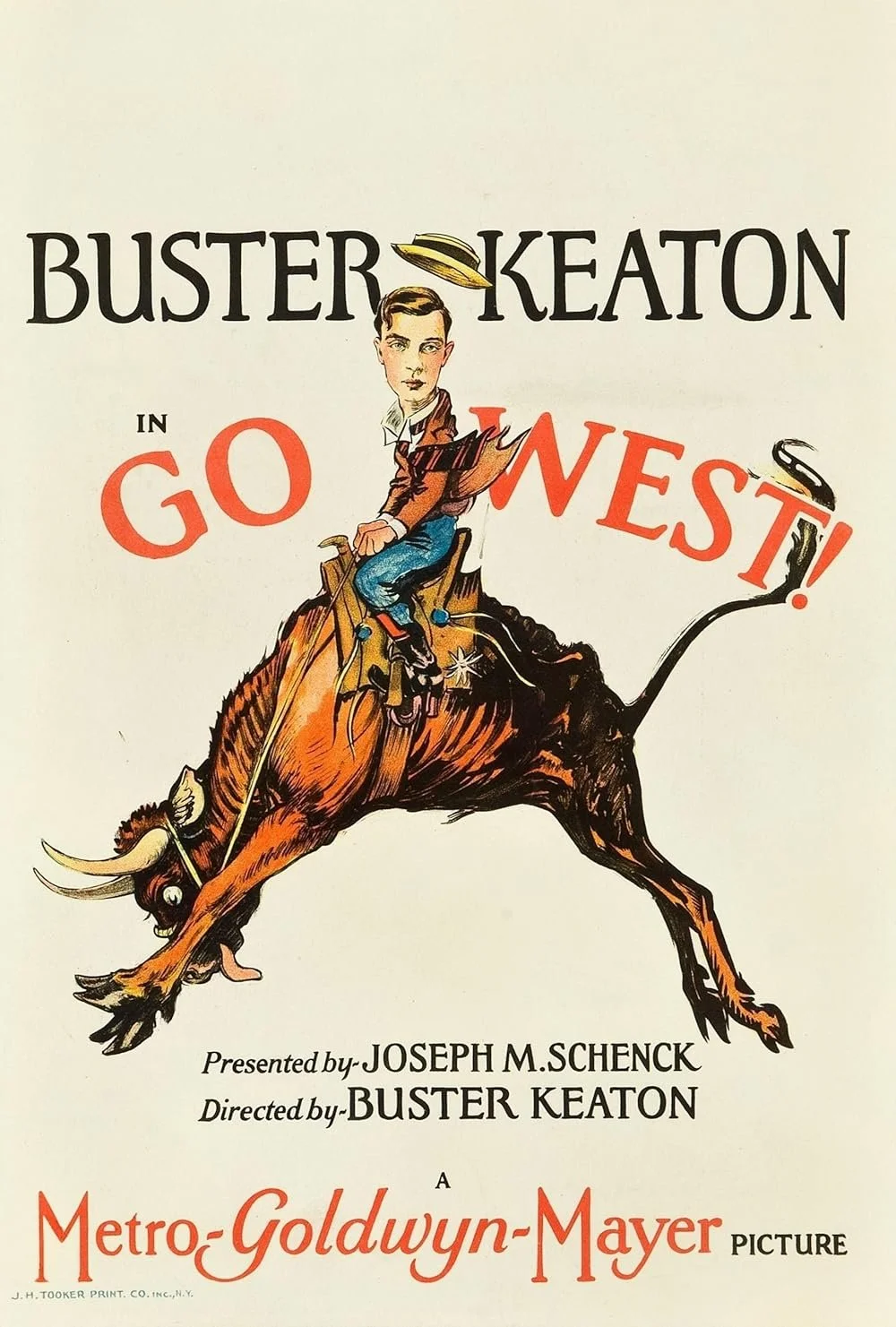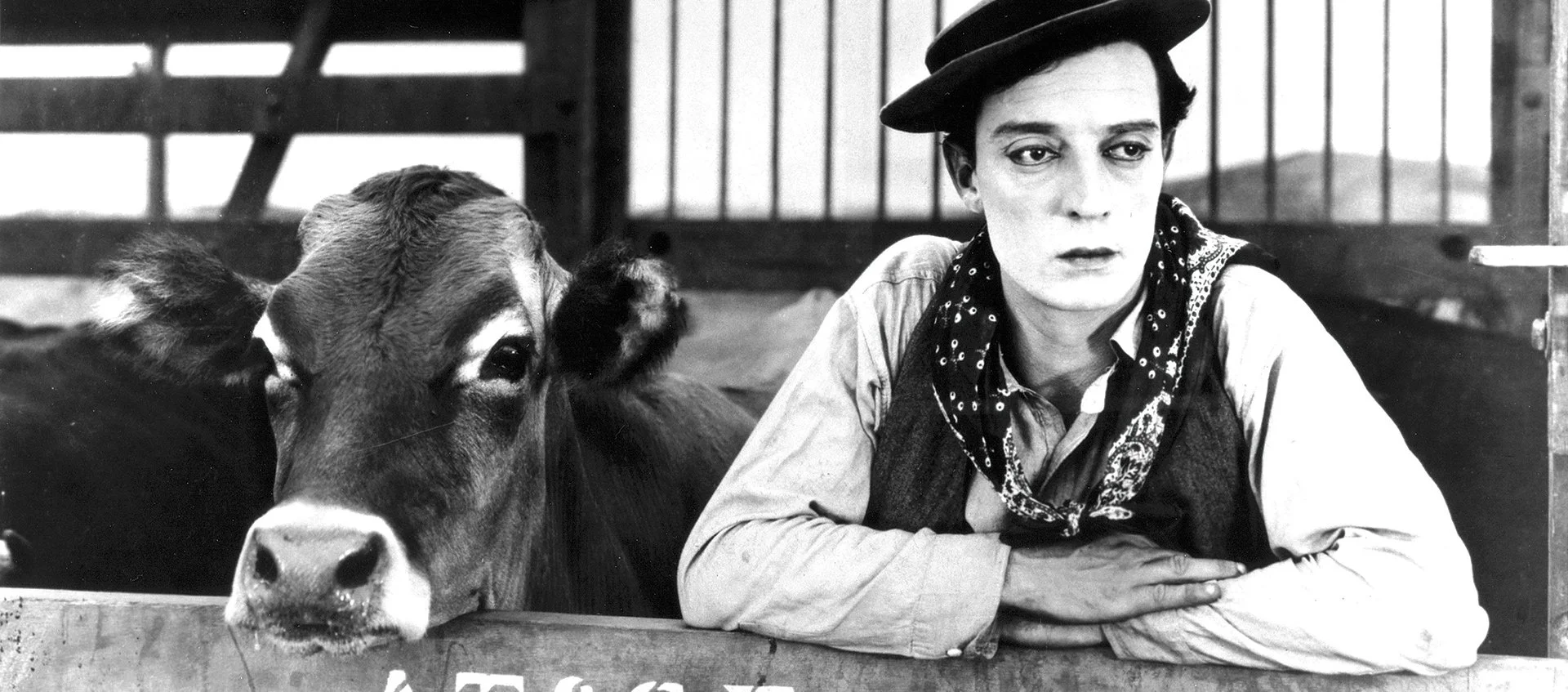THAT'LL DO: Buster Keaton's GO WEST (dir by Buster Keaton, 83mns, MGM, 1925)
Because we know the jaw dropping stunts of the Buster Keaton masterpieces-Sherlock Jr, The General, Seven Chances-a sweet hearted, ingenious, genial entry like Keaton's 1925 GO WEST almost feels like Keaton at half-speed.
But the deliberate construction, set piece development, and calculated escalation to a third act cattle drive through the streets of downtown Los Angeles (or a studio backlot) remind you otherwise.
You're in the hands of a master here. Don't worry. You'll get your money's worth.
Keaton may be figuring things out in GO WEST that he'll develop even further in THE GENERAL (a rough draft sequence here finds Keaton on a runaway cattle train) but there are so many ingenious gags, GO WEST is a textbook unto itself.
The currency of great silent film comedians is the gag. That bit of business in a shot or scene that gets the audience chuckling or roaring or gasping. The art of the gag is an endangered species. Sometimes only seasoned moviemakers like Steven Spielberg and George Miller still seem to know how to execute the craft.
We can all up the game of our movies by re-learning it. And ground zero is the cinema of Buster Keaton and Charlie Chaplin.
In GO WEST, Keaton is "Friendless" a midwestern unlucky schlub who rides the rails to the west where he sneaks into a job as a cowboy-a job he knows nothing about.
The comedy equation here is CLUELESS FISH OUT OF WATER + COWBOY STUFF = CONSTANT MISHAPS.
But quickly, Keaton is befriended by a cow "Brown Eyes" who protects him from a stampeding bull. And a love story is born.
The geniuses of Buster Keaton and Charlie Chaplin, though different, overlap in their abilities to figure out tons of gags that come out of a single premise, a location, or set-up.
Keaton jumps into the story right away with an opening shot of him leaving a home he can no longer afford pulling a rolling bed with all his belongings on it. He goes into a general store. Gets $1.65 for everything. And then just as quickly loses the $1.65 from the buying back of an heirloom, a loaf of bread, and the unintentional donation of the rest to a passing charity.
Okay. We got it. We know this guy. He's hapless as well as friendless.
The middle passage of Keaton on a ranch clumsily trying to figure out cowboy work while protecting and being protected by Brown Eyes is a leisure stroll. You chuckle and find the bits endearing. But nothing rises to the level of the death-defying stunts you've seen in other Keatons.
A boy and his cow.
And just when you think. . .okay. . .this was heart warming if nothing special, Keaton stages a runaway cattle train sequence that leads immediately into hundreds of real heads of cattle loose on downtown streets running into department stores, police stations, and Turkish baths.
The construction of Keaton's movies are Swiss watches of simplicity and focus. GO WEST revolves almost entirely around Keaton's love of Brown Eyes, a miniature pistol, and a plant that bulls will charge you when you shake something red in front of them.
And Keaton, the master of being straight man, stunt man, and comedian all in one person, demonstrates a fearsome understanding of when to be each to set-up, deliver, develop the gag. He, like Chaplin, is the true engine of his stories. And his talent, like Chaplin's, is to create incredible cinema and make it look simple and effortless.
While culture and entertainment have new demands, there are certain fundamentals of cinema that are at risk of being forgotten.
Watching a clever confection like GO WEST is a reminder that to become better cinematic athletes we have to watch the tape of classic games. In this case, we need to revisit the great silent film comedies of the great masters.
Craig Hammill is the founder.programmer of Secret Movie Club


